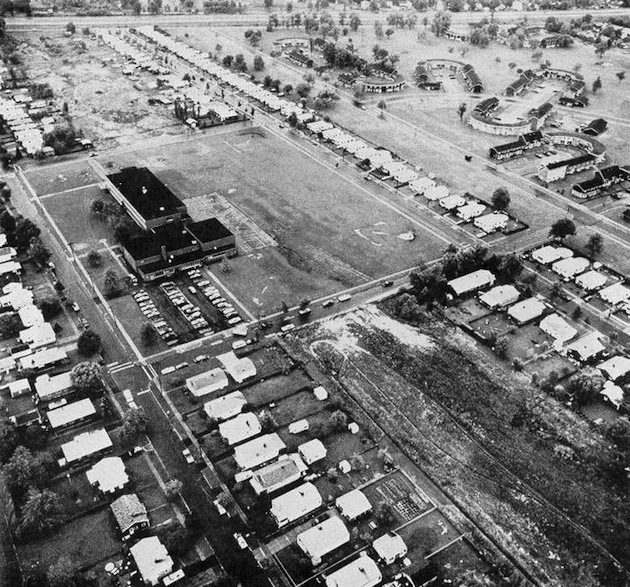
The Comprehensive Environmental Response Compensation and Liability Act – also known as CERCLA or Superfund – has changed the landscape of legal precedent and liability in cases of environmental contamination. It is the driving legislation behind Phase I site assessments required or elected during real estate transactions. In the 1970s, there were two cases that created a public outcry for the federal legislation that would become CERCLA: the Love Canal site in Niagara, New York and the Valley of Drums site near Louisville, Kentucky. Both sites exemplified the worst fears of potential fallout from cheap and negligent disposal of toxic waste. America had a lot of cleaning up to do after a very lucrative period of industrialization.
Construction of the Love Canal began in the 1890s. The project was initially designed to bypass Niagara Falls, but financial backing was lost with only a mile of the canal completed. After spending many years abandoned, the Niagara Power and Development Company granted the Love Canal to Hooker Electrochemical Company in 1942 as a place to dump chemical waste. Hooker and the United States Army used the site for waste disposal until 1953, when the site was closed, capped with clay, and covered over with soil. That same year the Niagara Falls City School District approached Hooker to acquire the land. Hooker initially refused citing safety concerns – though when faced with a compulsory acquisition, Hooker agreed to sell the site to the district for one dollar provided that the deed would contain a disclaimer against liability for “…injury to a person or persons, including death resulting there from, or loss of or damage to property caused by, in connection with or by reason of the presence of said industrial wastes.”
Despite the warnings from Hooker, the Niagara Falls City School District began construction of the 99th Street School in January of 1954. During excavation, workers discovered two dumpsites filled with 55-gallon drums containing unknown substances. On the advisement of the architect, the building site was moved eighty-five feet to the north. Following completion of the school in 1955, a twenty-five foot section of the landscape crumbled, and drums were exposed that filled with water during rainstorms, resulting in runoff. In 1957 the district sold off the remaining land to the Niagara Falls Housing Authority and other developers who created a mixture of low-income and single family residences. While laying gravel sewer beds, workers broke through the clay seal of the canal, which allowed further runoff. Later, construction of the nearby LaSalle Expressway stopped much of the groundwater migration that was allowing contaminated rainwater to flow into the Niagara River. This had the effect of essentially turning the former canal into a bowl that would fill with rainwater and migrate, with a high concentration of toxicity, to residential areas built on and around the site.
Skip forward almost twenty years. Local reporters conduct informal research around the site and publish articles on the problem. After being largely ignored by local politicians and the Hooker Chemical Company, now owned by Occidental Petroleum, vocal advocacy groups brought the issue to the attention of the United States Environmental Protection Agency (EPA). In 1978, President Jimmy Carter ordered the Federal Disaster Assistance Agency to assist the city in cleaning up the site. This was the first time the agency had been called to assist with anything other than a natural disaster.
After the extent of the contamination had been discovered, Love Canal was criticized as a huge failure of public policy. Local politicians repeatedly failed to acknowledge and address the issue until the news media picked up the story. Ultimately, more than 800 families were relocated, and one of the most extensive waste cleanup programs of the time was begun. This and a handful of other toxic waste sites were responsible for bringing public scrutiny and forcing a federal response to a problem everyone had just begun to realize existed.
 Justin Ripple
Justin Ripple
Document Research Services
banks@banksinfo.com
